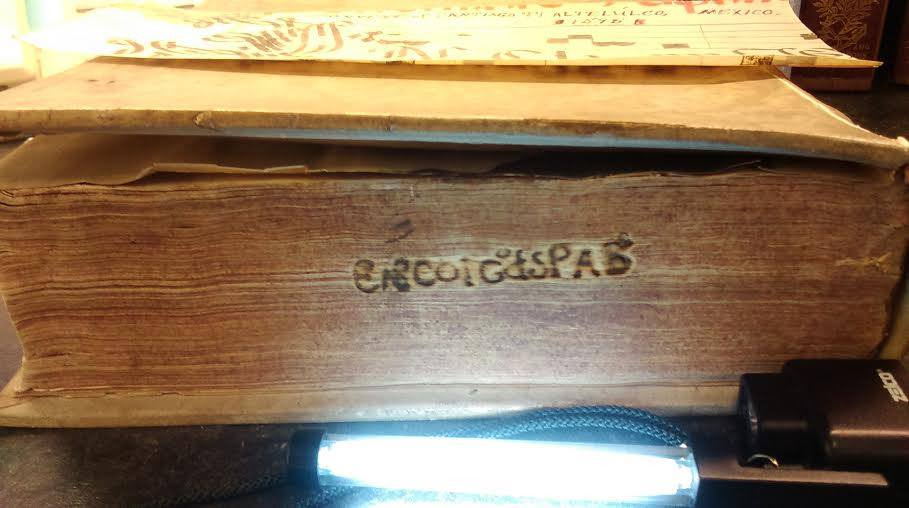
"Raking Light": Bright Illumination of a Target from the Side to Highlight Features Hard to See in Direct Light

This book is a 1528 edition of the works of Virgil, printed in Lyon, France, and discovered by a friend of John Franklin Goucher near the Methodist mission in Puebla, Mexico in the late 1890s. Francis Borton, Goucher's friend (in two senses), often sent John Goucher rare books he had discovered in return for Goucher's frequent donations to support the mission. Our evidence for this provenance is indirect, but highly likely, and made easier to see by this image's use of "raking light," emitted from the light bulb you see below the book, which brings out the depressions left by a branding iron used to claim ownershp of books by the librarians of Eximio Colegio de San Pablo, Puebla, Mexico. The brand is a stylized contraction of the college's name, just like cattle brands. In this case, the abbreviation reads: "Em║ Colg║ d S Pab║" Once the brand had been imaged using raking light, we were able to trace it by comparison with recorded book brands on the "Marcas de Fuego" Web site. Because two other volumes in the collection have clear provenance proving they were donated to Goucher by Borton, and they also bear "marcas de fuego" from a single library also in Puebla, Mexico, we can conclude it is highly unlikely that this edition of Virgil came to Goucher from any other source.
Raking light is especially useful for bringing out patterns "blind stamped" into book bindings. It also sometimes can recover handwriting from impressions left on a lower leaf by the writing on an upper leaf that has since been removed, a practice you may have seen reenacted in espionage or police procedural movies.